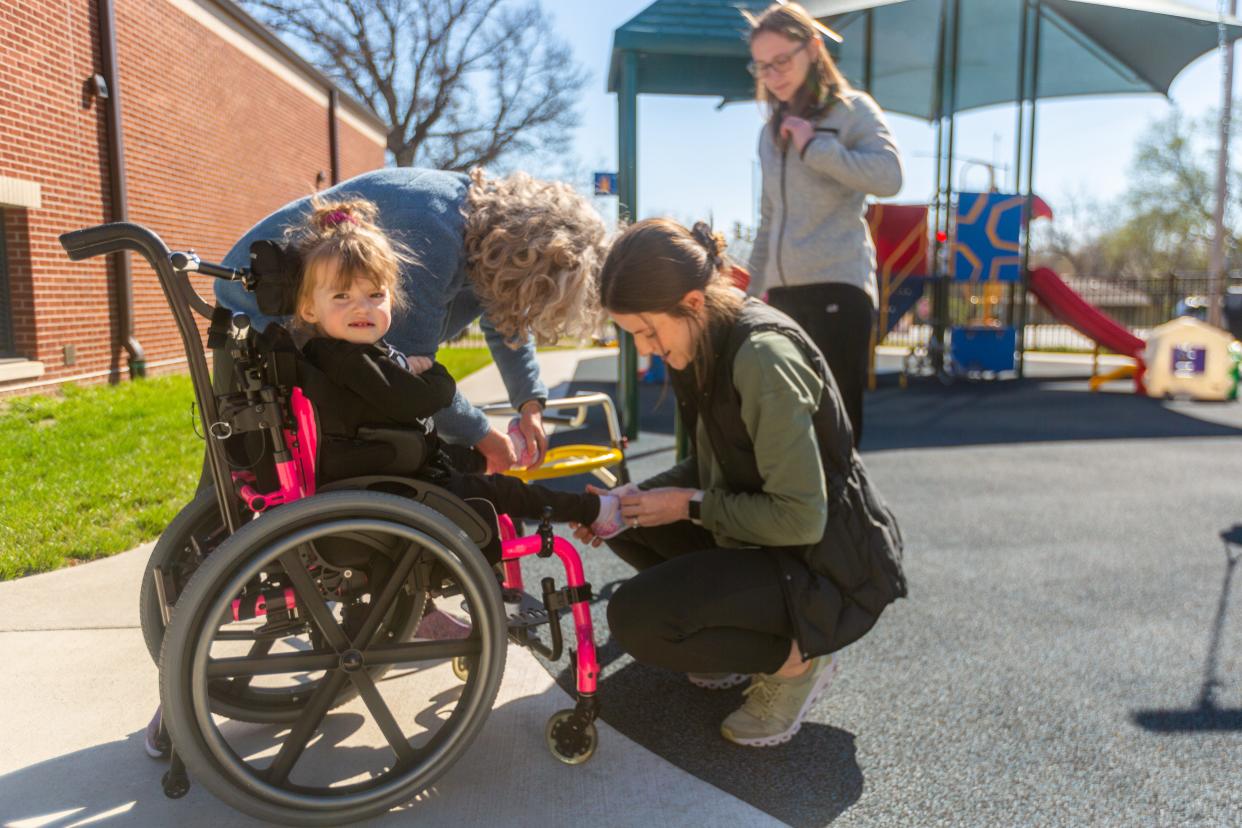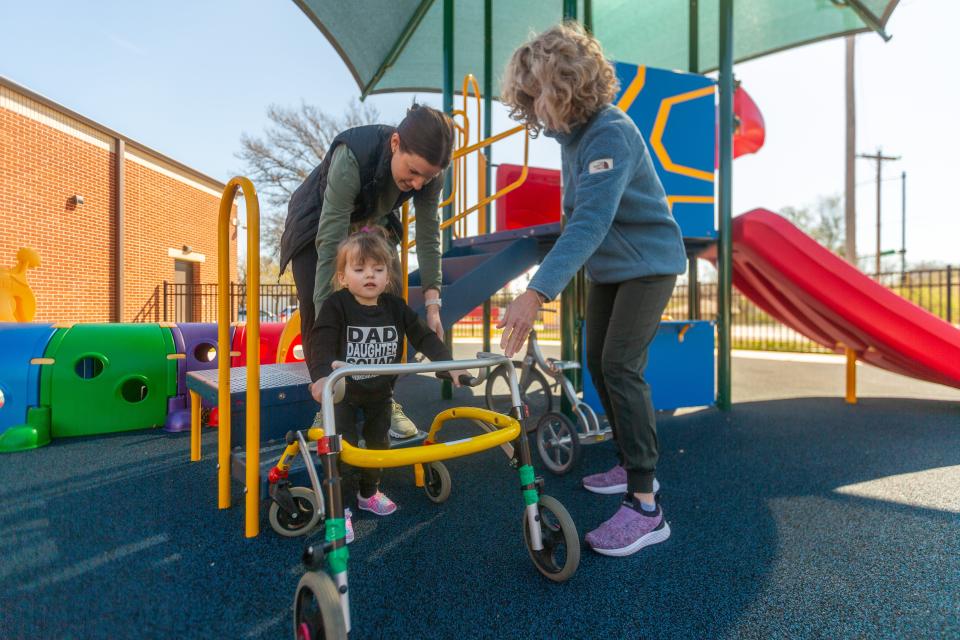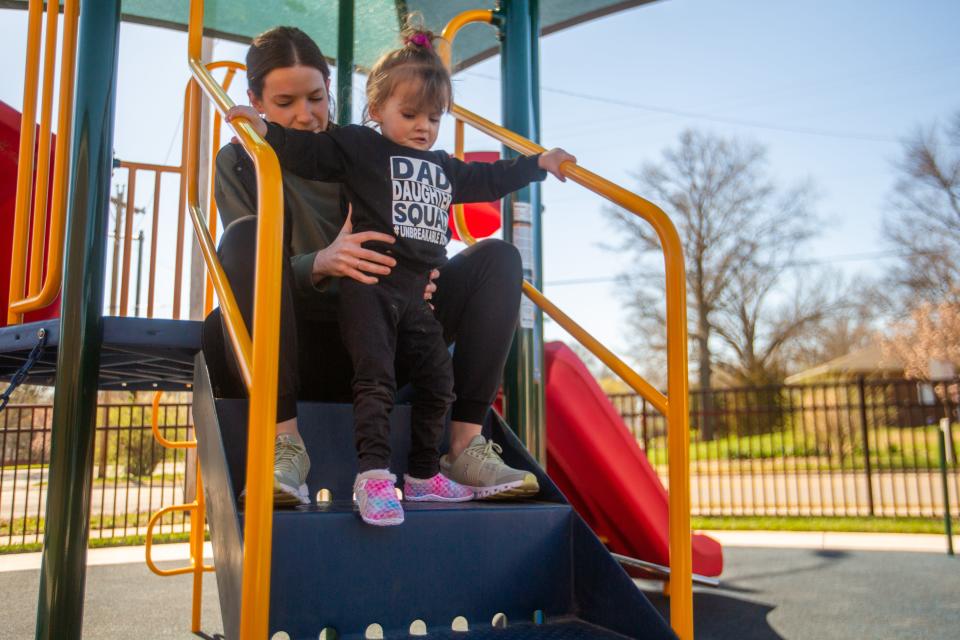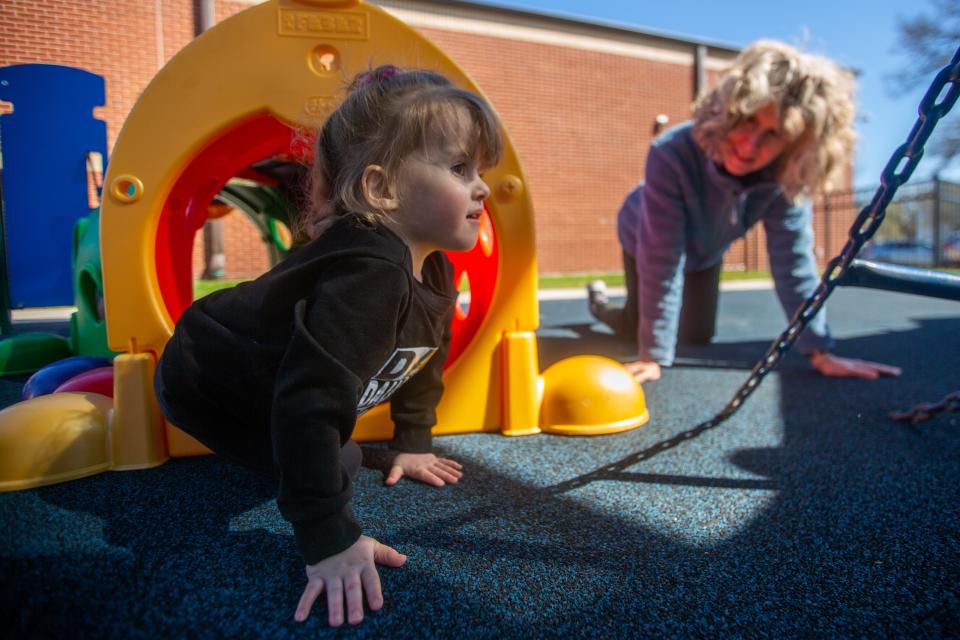How Topeka USD 501 is making sure all students have accessible playgrounds

Some of the best days in Amira Payne’s preschool life are the ones when she gets to go play with physical therapist Marie Young at the Quinton Heights Education Center playground.
Payne, a preschooler at Williams Science and Fine Arts Magnet Elementary School, makes the trip out to see Young and other physical therapy workers at the education center, since her home school playground isn’t as conducive to her wheelchair or her “Crocodile” — a lightweight walker designed to help young children with mobility impairments get around.
More: In this southwest Kansas classroom, immigrant students' goal isn't graduation — it's survival
Together with Young and physical therapist assistant Jenn Rollins, the team zooms around the accessible playscape, rolling right up to the playtower and practicing using railings to pull themselves up to the top of the slide.
It’s where Amira can just be herself — a kid with a whole playscape of potential around her.
And with an $827,000 investment, scores of kids at several Topeka USD 501 elementary schools will get that same opportunity.

Following the end of the spring semester, Topeka USD 501 will over the summer replace the playgrounds at Highland Park Central, Lowman Hill, Meadows and Whitson elementary schools to allow children with mobility impairments the same opportunity to play with their friends and learn gross motor skills.
Plans for the playground replacements came after community discussions on how to spend Topeka USD 501’s tranche of ESSER funding, or federal COVID-19 relief dollars, said grants coordinator Stacy Kramer.
“We had so many other expenses that this did not make our ESSER III funding, but this continued to weigh on our hearts and minds, and (general special education director Jennifer) Harrington decided to take a look at her funding,” Kramer said. “She has a pot of money, her regular special education budget, but also some from ESSER for special education, and we decided to combine some of that money.”
New USD 501 playgrounds will feature springy surfaces and accessible equipment

Young and Jenna Hamilton, Topeka USD 501’s other physical therapist, played a key role in advocating for the new playgrounds, since they work with students all over the district who may not have accessible equipment at their home schools.
In assessing playgrounds, the physical therapists first look at if students can even get onto the playground.
“A lot of times, you don’t think about the barriers that go around the playground, and how some students aren’t able to step over them, or they can’t wheel their wheelchair or walker around,” Young said. “The surface is also a concern. A lot of playgrounds are mulch, whether it’s rubber or wood, and some kids have a hard time navigating that.”
More: At 100 and 1/2 years, longtime Topekan Julie Reeves shares what made decades special
The new accessible playgrounds will be solid, but springy, surfaces, like that at Quinton Heights Education Center’s playground. The surfaces will still have enough “give” to protect students if they fall, but they’ll be easier for students with impairments and wheeled-devices to navigate.
Pieces of playground equipment will be designed for easy entry to students with mobility impairments, with all having at least one wheelchair-accessible portion. Some playgrounds will even feature communication boards, so that nonverbal students may use images and symbols to communicate with friends and adults.
Topeka Public Schools' accessible playgrounds will give students freedom to be kids

Although the playground replacements will start with just four elementary schools, the plan is to eventually spend about $1.5 million to replace and upgrade all remaining Topeka USD 501 elementary school playgrounds with accessible versions. Some schools — such as Shaner, Quinton Heights and State Street — had already received playground upgrades in more recent years.
The first four of the remaining playgrounds were picked based on prioritization in terms of how the projects fit into the budget, as well as which playgrounds needed the most work done.
More: Is Kansas Legislature underfunding special education? Advocates say the state is falling far short
Young and Hamilton couldn't overstate how much the playgrounds will help the students they work with on a daily basis.
“Inclusivity is huge, and they’ll be able to play with their friends,” Hamilton said. “Yes, they’ll get the gross motor skills, which is what we love (as physical therapists), but we’re also getting communication, social skills, fine motor skills — all the pieces of the puzzle that help develop kiddos.”
Put simply, the playgrounds will give all Topeka USD 501 students a chance to be kids.
“Being able to be on the playground with their friends will make a huge difference in terms of those positive social interactions that you get outside of the classroom,” Young said. “They’ll have the freedom to be kids and have fun.”
Rafael Garcia is an education reporter for the Topeka Capital-Journal. He can be reached at rgarcia@cjonline.com or by phone at 785-289-5325. Follow him on Twitter at @byRafaelGarcia.
This article originally appeared on Topeka Capital-Journal: Topeka USD 501 installing accessible playgrounds at elementary schools

